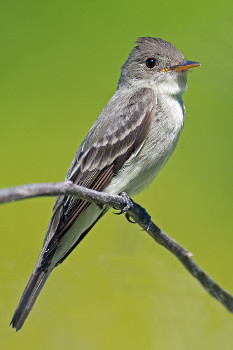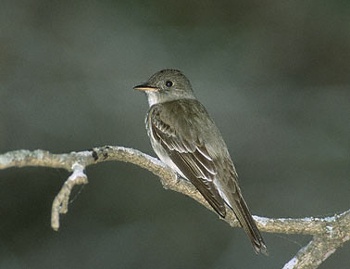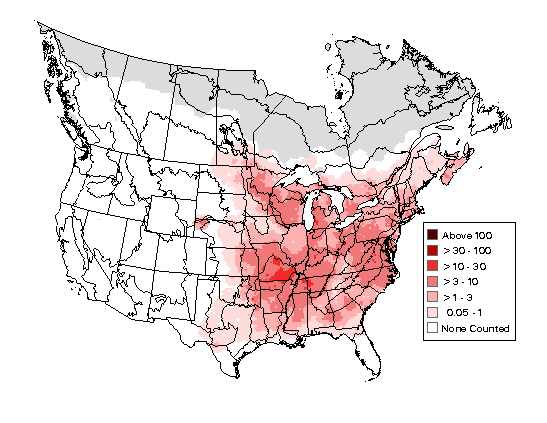Eastern Wood-Pewee

Eastern Wood-Pewee Information
Length: 6 - 6.5"
Habitat: Generally deciduous woodlands, but also mixed forests and coniferous forests. Prefers forest edges and clearings. Also found in orchards, in parks, and along roadsides.
Diet: Mainly small flying insects such as wasps, winged ants, bees, and moths. Also some spiders and berries.
Additional Information
Eastern Wood-PeweeDescription, range, habitat, songs and calls, identification tips, and behavior. Includes photos, illustration with field marks, and range map. (From WhatBird.com)
Eastern Wood-Pewee

Eastern Wood-Pewee
Identification Tips
- Triangular head
- Grayish-olive upperparts
- Dark bill is yellow at base of lower mandible
- Breast has olive wash
- Whitish throat, belly and undertail coverts
- Wing bars
- Commonly feeds high in the canopy by flying out to catch insects and returning to same perch
The relatively nondescript Eastern Wood-Pewee is almost identical to the Western Wood-Pewee and is best separated by differences in range and songs. The larger Greater Pewee has a different range and an entirely yellow lower mandible.
Olive-sided Flycatcher is quite similar but is larger, with more obvious dark sides, larger bill, and sometimes has white patches visible above the wing. Empidonax flycatchers are very similar but appear smaller, have more obvious eye rings (most species), and different vocalizations. Juvenile Eastern Phoebe is similar but has a darker head and wags its tail.
(Credit: U. S. Geological Survey)
Breeding Bird Survey Map,
2011-2015

(Image credit: USGS)
Range in New England
The Eastern Wood-Pewee
is found breeding throughout New England.
This bird winters primarily in South America, although there have been winter sightings in Central America as well.
Winter Map from eBird
Sightings of the Eastern Wood-Pewee from Dec-Feb over past 10 years
(2009-2019)![]()